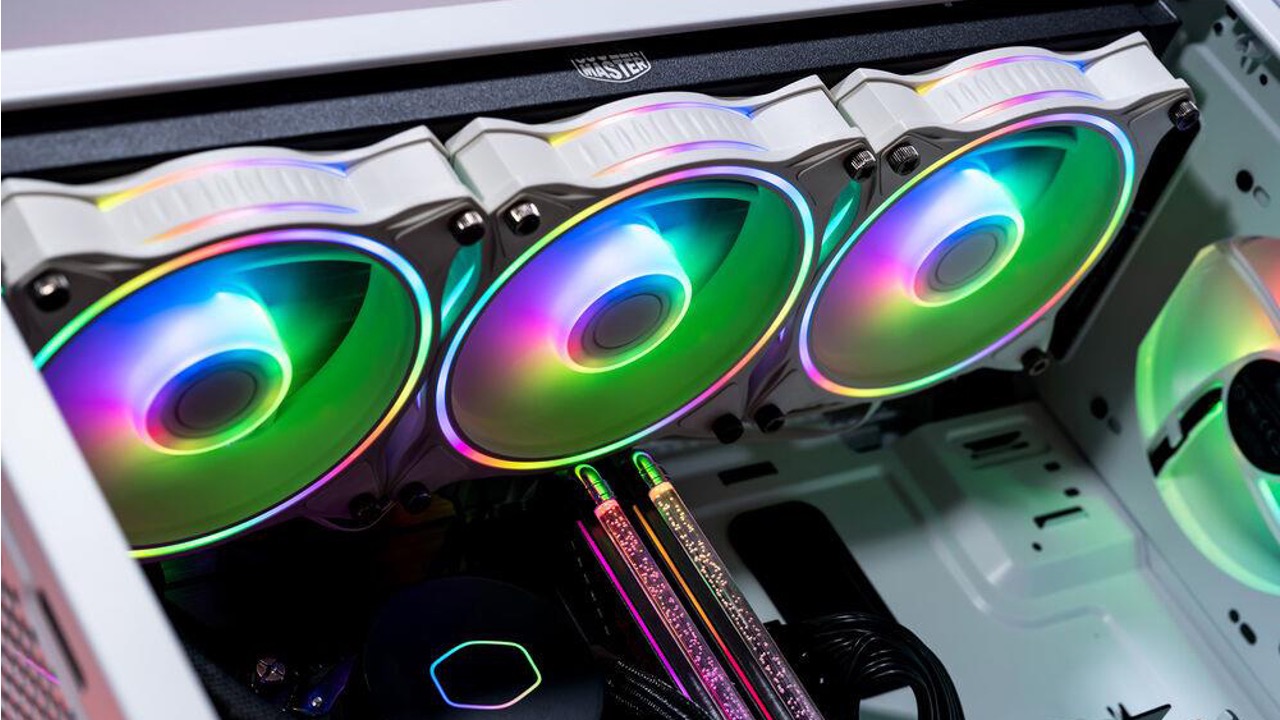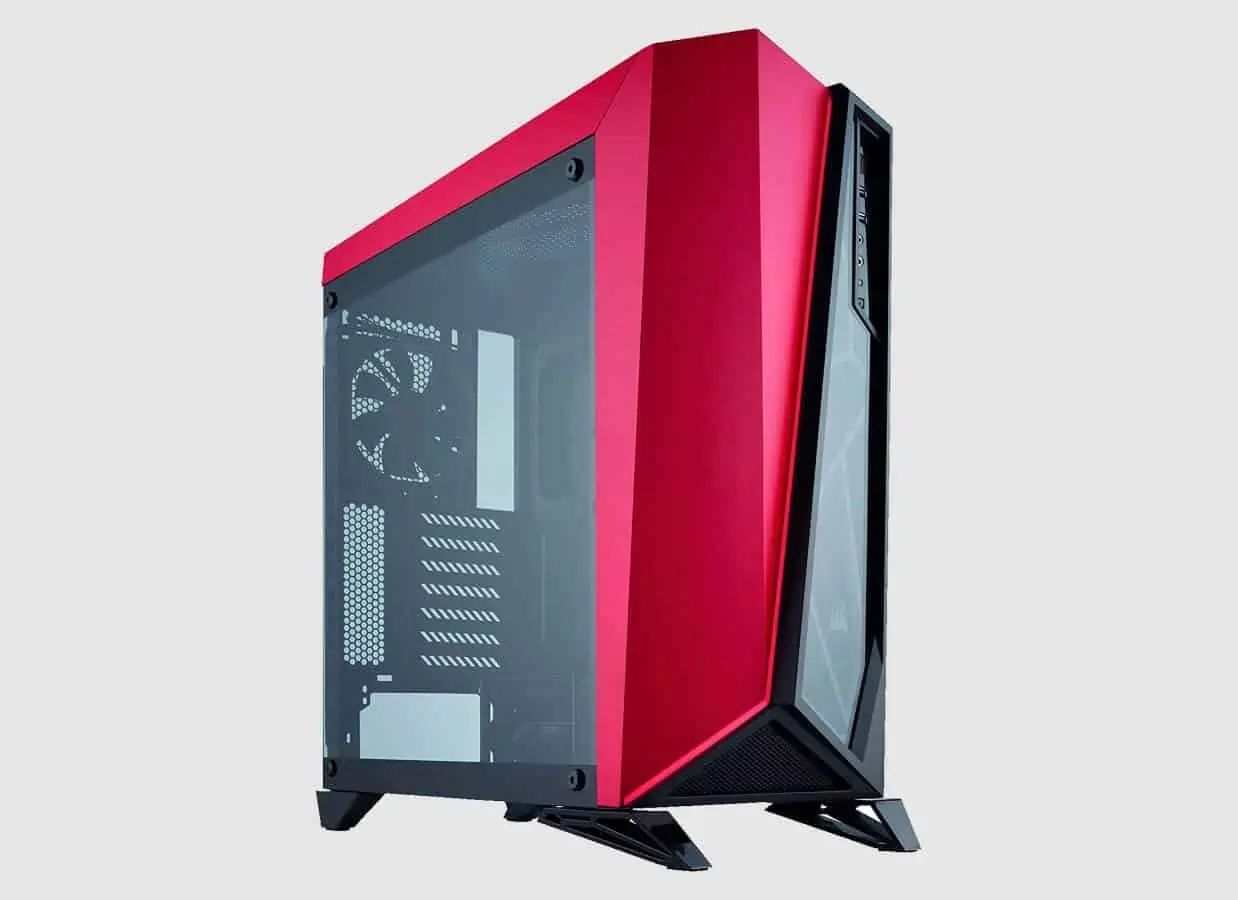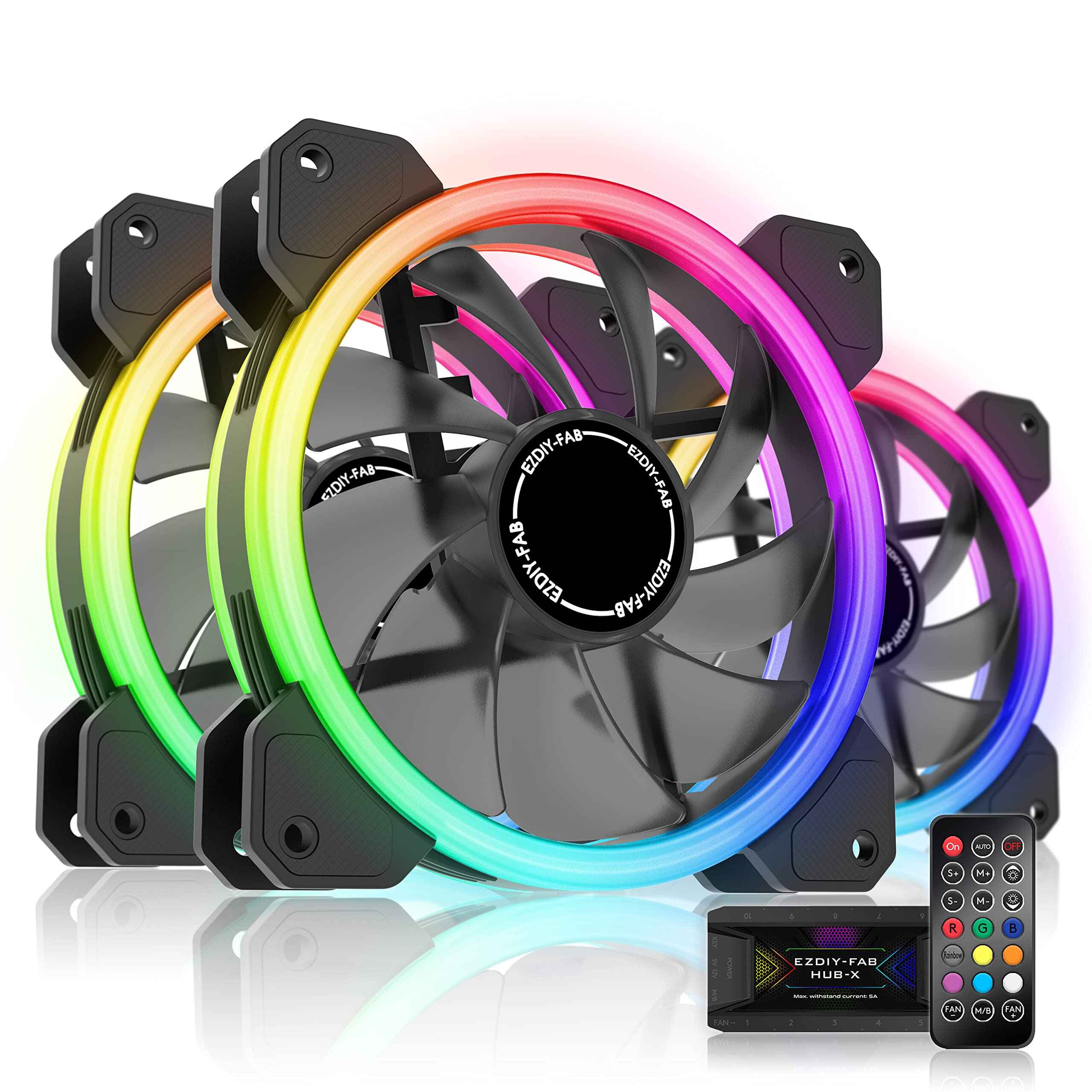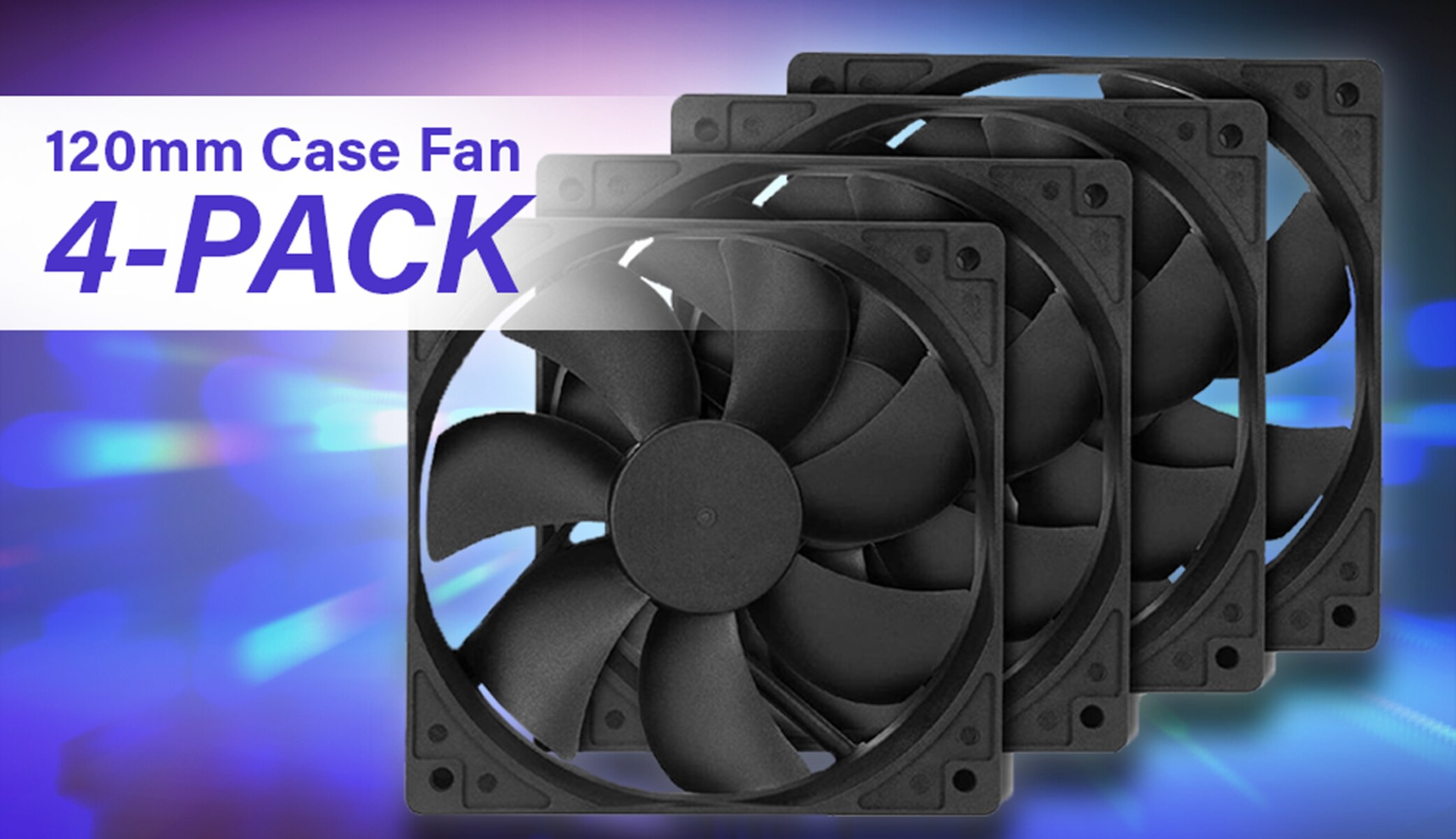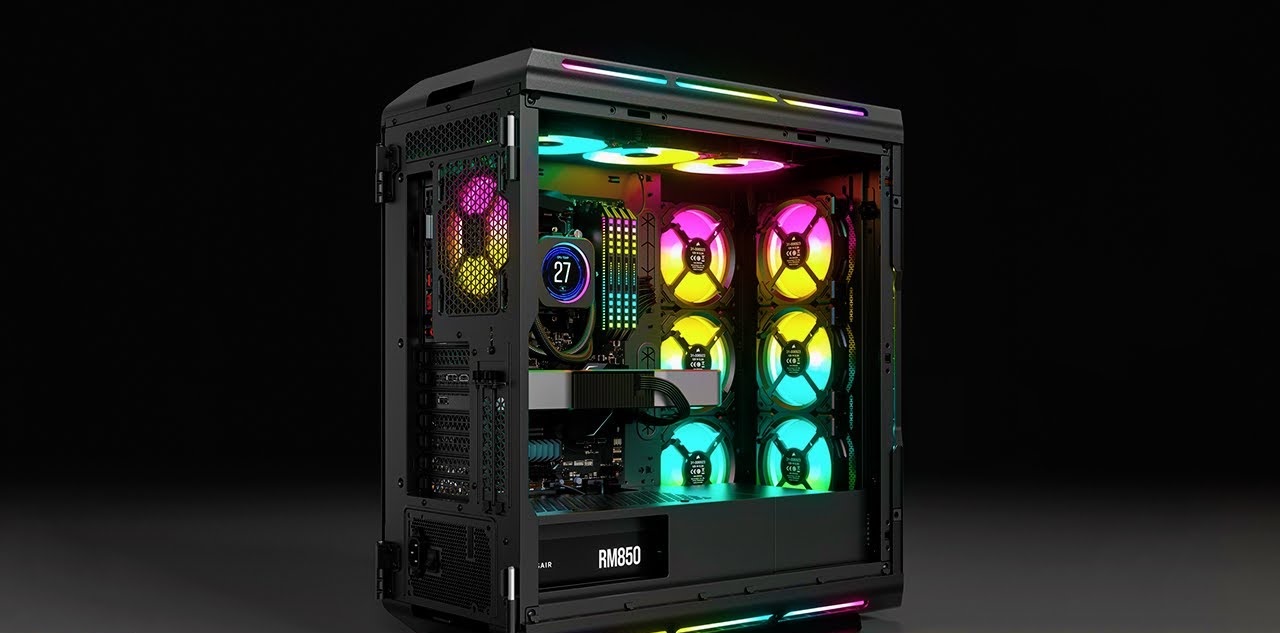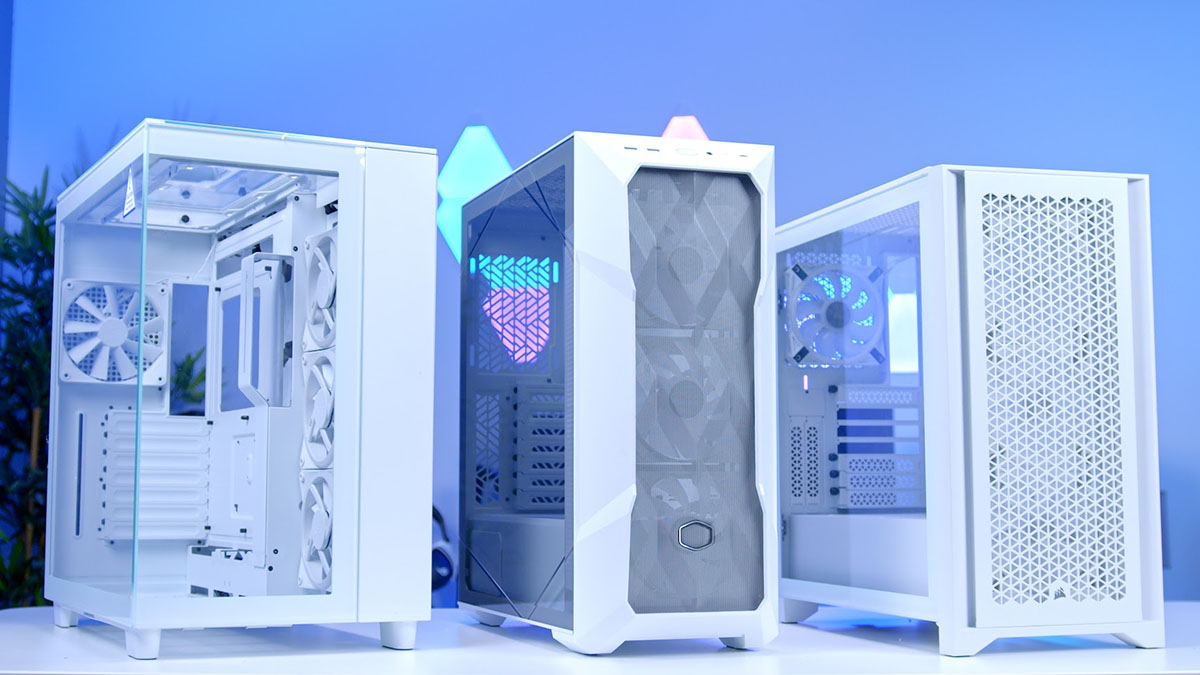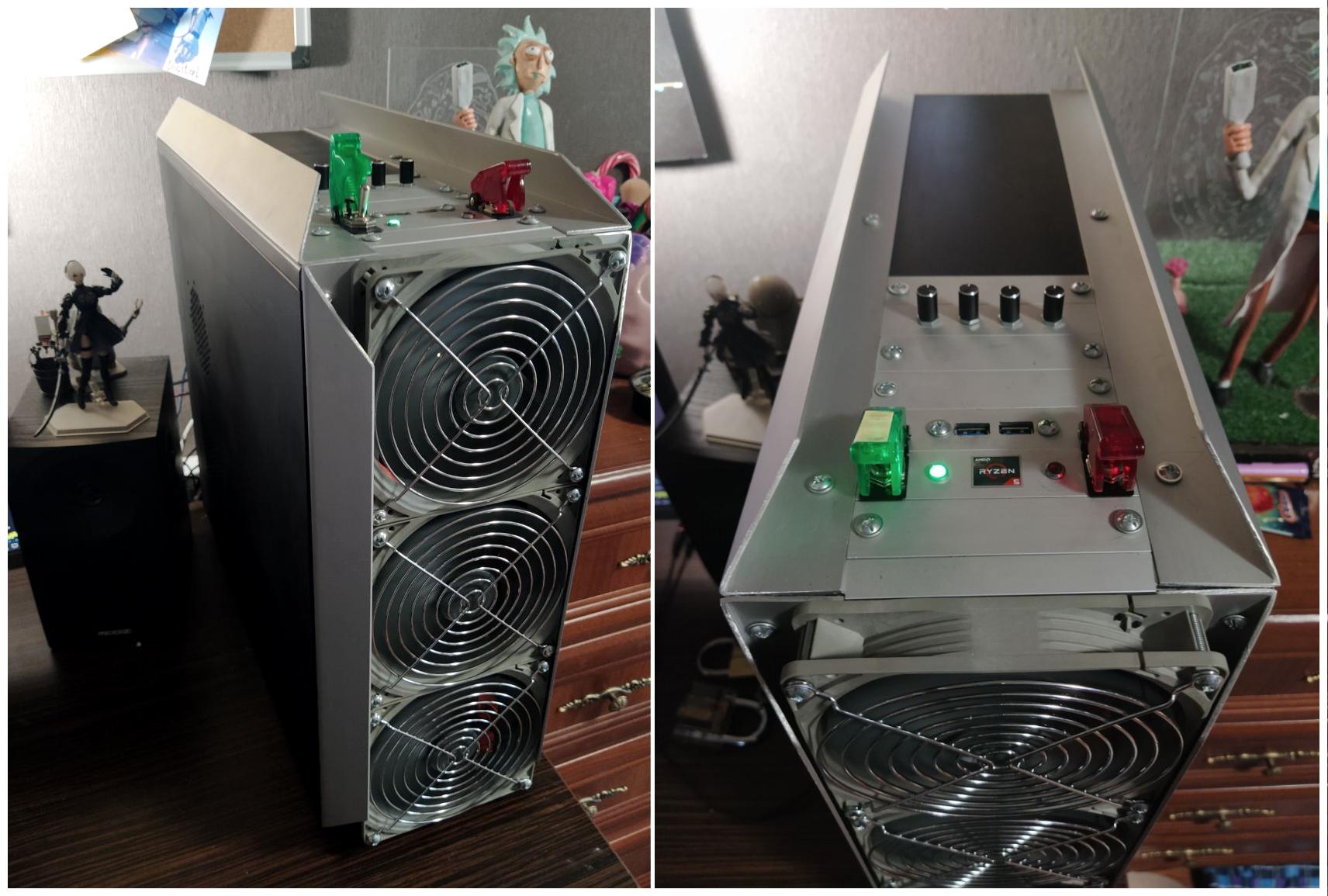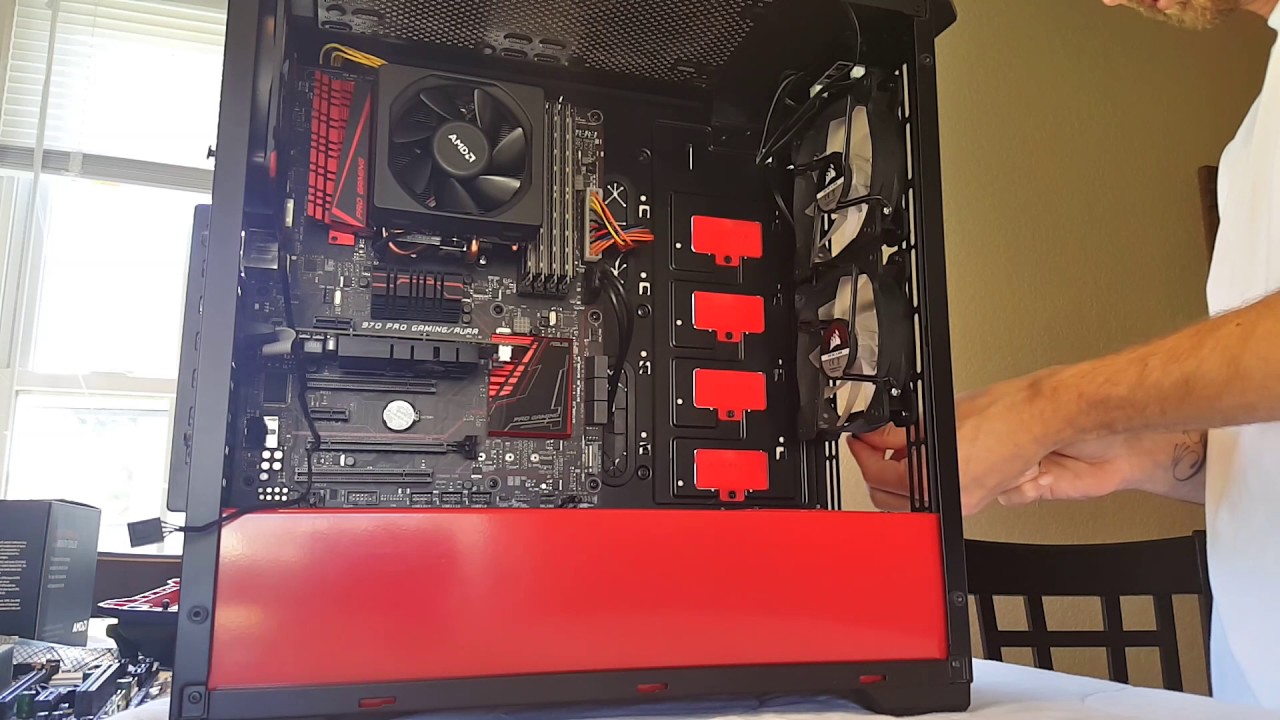Introduction
Welcome to our guide on what to look for in a PC case fan! If you’re a computer enthusiast or someone who spends extended periods working or gaming on your computer, ensuring proper cooling is essential. A well-functioning PC case fan helps regulate the temperature inside your computer, preventing overheating and ensuring optimal performance.
Choosing the right PC case fan can be overwhelming, considering the variety of options available in the market. That’s why we’re here to help you understand the key features and factors to consider when selecting a PC case fan.
But why is a PC case fan so important? When your computer components generate heat during operation, it needs to dissipate that heat to prevent damage. A PC case fan helps to circulate air inside the computer, expelling the hot air and drawing in cooler air to maintain an ideal temperature. Proper cooling not only extends the lifespan of your computer but also enhances its performance.
Now that we understand the importance of a PC case fan, let’s explore the factors that you should consider when choosing one.
Size and Compatibility
When selecting a PC case fan, the first thing to consider is its size and compatibility with your computer case. PC case fans come in various sizes, commonly measured in millimeters (mm). The two most common sizes are 120mm and 140mm, but you can also find smaller or larger options depending on your needs.
Before purchasing a case fan, consult your computer case specifications or manual to determine the fan size it supports. Installing a fan that is too large for your case may result in clearance issues, while a fan that is too small may not provide adequate airflow.
Additionally, consider the available fan mounting options in your case. Most cases have mounting points for fans on the front, rear, and top panels. Ensure that the chosen fan size is compatible with the available mounting points in your case to maximize cooling efficiency. Some cases may support multiple fan sizes, allowing you to mix and match for optimal airflow.
Lastly, take note of the fan connector type. Most PC case fans use a standard 3-pin or 4-pin connector, which connects to the motherboard or a fan controller. Check the compatibility of the fan connector with your motherboard or fan controller to ensure proper functionality and control.
Airflow
When selecting a PC case fan, it’s crucial to consider its airflow capability. Airflow refers to the volume of air a fan can move within a specific time, typically measured in cubic feet per minute (CFM) or liters per second (L/s).
The airflow of a fan determines its ability to cool your computer components effectively. A higher airflow rating indicates better cooling potential. However, it’s essential to strike a balance between airflow and noise level, as fans with higher airflow tend to produce more noise.
When assessing the airflow capacity of a PC case fan, consider the layout and design of your computer case. Take note of the areas where hot air tends to accumulate, such as near the CPU or graphics card. Placement of fans in these areas can help in directing the hot air out of the case and maintaining lower temperatures.
Furthermore, consider the number of fans you plan to install in your case. Creating a balanced airflow system with intake and exhaust fans can help facilitate a steady flow of cool air and expel hot air efficiently. It’s not just about the individual airflow rating of a fan, but also how they work together to create an optimized cooling solution.
Besides standard case fans, you may also come across fans specifically designed for specific components, such as CPU coolers or graphics card coolers. These specialized fans are engineered to provide targeted airflow to their respective components, ensuring optimum cooling performance.
Overall, it’s essential to select PC case fans with adequate airflow capacity suitable for your computer’s cooling requirements.
Noise Level
Along with airflow, the noise level of a PC case fan is another crucial factor to consider. Nobody wants a loud and distracting computer, especially during intense gaming sessions or when working in a quiet environment.
The noise produced by a fan is measured in decibels (dB). Fans with lower dB ratings are generally quieter, while those with higher ratings can be louder. It’s important to strike a balance between noise level and performance when selecting a PC case fan.
There are several factors that can affect the noise level of a fan. One of the main contributors is the fan speed. Fans operating at higher speeds tend to produce more noise. Look for fans that have low noise specifications at high speeds or consider fans with variable speed controls, so you can adjust the fan speed according to your needs.
The fan design also plays a role in noise production. Fans with optimized blade designs and advanced bearing systems can minimize noise while maintaining good airflow. Look for fans labeled as “quiet” or “silent” for a more pleasant user experience.
Consider the type of bearings used in the fan as well. Fans with ball bearings tend to be louder compared to those with fluid dynamic bearings or magnetic levitation bearings, which provide quieter operation.
If noise reduction is a top priority for you, consider investing in fan silencers or anti-vibration mounts. These accessories help absorb vibrations and reduce noise generated by the fan’s operation.
Ultimately, finding the right balance between airflow and noise level is crucial, as you want your computer to stay cool without sacrificing a peaceful and quiet working or gaming environment.
Bearing Type
When selecting a PC case fan, the bearing type is an important consideration. The bearing is responsible for reducing friction and ensuring smooth rotation of the fan blades. Different bearing types offer varying levels of performance, noise output, and lifespan.
One of the most common bearing types is the sleeve bearing. This type of bearing features a simple design with a shaft surrounded by a sleeve of oil or lubricant. Sleeve bearings are cost-effective and offer decent performance, but they tend to produce more noise and have a shorter lifespan compared to other bearing types.
The ball bearing, another common option, uses a set of small balls to support the fan shaft. Ball bearings provide better stability and durability, resulting in a longer lifespan and reduced noise levels. However, they tend to come at a higher cost.
Fluid dynamic bearings (FDB) are a popular choice among PC enthusiasts. FDB fans use a combination of fluid lubricant and a dynamic seal to reduce friction and noise. These fans offer excellent performance, long lifespan, and reduced noise levels, making them ideal for noise-sensitive environments.
Another innovative bearing type is magnetic levitation (ML) bearings. ML fans use magnetic fields to suspend the fan rotor, resulting in virtually frictionless rotation. This design eliminates the need for traditional ball bearings, reducing noise and increasing both performance and lifespan. ML fans are known for their exceptional cooling capabilities and quiet operation.
When choosing a fan with a specific bearing type, consider your priorities. If noise reduction and longevity are important to you, FDB or ML bearings are excellent choices. However, if you’re on a budget, fans with sleeve or ball bearings can still provide satisfactory performance at a lower cost.
Remember, the bearing type is just one factor to consider when choosing a case fan. It’s important to analyze it in conjunction with other key features to find the fan that best suits your needs.
Speed and Control
Speed and control are essential factors to consider when selecting a PC case fan. Fan speed is typically measured in revolutions per minute (RPM) and determines how fast the fan blades rotate. A fan with a higher RPM rating can provide more airflow but may produce more noise.
Depending on your needs and preferences, you may opt for a fixed-speed fan or a fan with variable speed control. Fixed-speed fans operate at a constant speed, which may be appropriate if you prefer a simple setup or have specific cooling requirements.
On the other hand, fans with variable speed control offer the flexibility to adjust the fan speed according to your needs. This feature allows you to balance airflow and noise level based on the workload of your computer. For instance, you can increase the speed during heavy gaming sessions and decrease it during more lightweight tasks, minimizing noise when maximum cooling isn’t necessary.
One way to control fan speed is through the motherboard’s BIOS settings. Many modern motherboards have fan control options that let you adjust the fan speed based on temperature readings or specific profiles. This allows for automatic adjustment of fan speed based on the computer’s workload and keeps noise levels in check.
Alternatively, you can opt for a fan controller, either built into your computer case or purchased separately. Fan controllers provide manual control over fan speed by adjusting the voltage or using a dedicated control panel. This gives you the ability to fine-tune the fan speed according to your preferences or specific cooling requirements.
When deciding on speed and control options, consider your tolerance for noise, cooling needs, and the level of control you desire over your system’s fan operation. By selecting the right speed and control features, you can achieve a balance between cooling performance and noise reduction for optimal computing experience.
RGB Lighting
RGB lighting has become a popular trend in PC building, allowing users to add a touch of personalization and aesthetic appeal to their systems. Many PC case fans offer RGB lighting options to enhance the visual experience.
RGB stands for Red, Green, and Blue, and RGB lighting allows you to create a wide spectrum of colors by combining these primary colors. With RGB fans, you have the flexibility to choose from a variety of colors, lighting effects, and patterns to match your setup or create a unique ambiance.
When considering RGB lighting in case fans, there are a few factors to keep in mind. The first is the level of customization and control available. Some fans have limited lighting options, with a few predefined colors or effects. Others offer advanced RGB control software or compatibility with popular RGB lighting ecosystems like ASUS Aura Sync, MSI Mystic Light, or Corsair iCUE. These software applications allow you to synchronize and control the lighting of multiple components, including case fans, for a cohesive and visually pleasing setup.
Another aspect to consider is the lighting placement on the fan. Different fans may have lighting only on the fan blades, on the frame, or both. If you want to highlight the spinning motion, look for fans with lighting on the blades. For a more subtle and uniform illumination, fans with lighting on the frame may be a better choice.
It’s worth noting that RGB lighting can add to the overall cost of the case fan. If RGB lighting is not a priority for you, there are also fans available without RGB options, which may be more budget-friendly.
Ultimately, the inclusion of RGB lighting in case fans is a matter of personal preference and the desired aesthetic appeal of your system. If you enjoy customizing the look of your computer and creating visual effects, RGB fans can be a great addition to your build.
Durability and Lifespan
When investing in a PC case fan, it’s important to consider its durability and lifespan. High-quality fans not only provide optimal cooling performance but also have longer lifespans, ensuring they can withstand continuous use and provide reliable operation.
One way to assess the durability of a fan is by examining its construction and materials. Fans with sturdy frames and quality materials are less likely to break or suffer damage during installation or operation. Look for fans made from durable materials such as reinforced plastics or metal alloys.
Additionally, consider the fan’s motor quality. Fans with high-quality motors tend to last longer and offer better performance. Look for fans with brushless DC motors, as they are known for their efficiency, reliability, and extended lifespan compared to brushed motors.
Furthermore, take note of the fan’s rated lifespan, typically measured in hours. Most manufacturers provide an estimated lifespan for their fans, indicating how long the fan can be expected to function before potential performance degradation. A longer-rated lifespan often indicates a more durable and reliable fan.
It’s important to remember that the lifespan of a fan is influenced by a variety of factors, including operating conditions, maintenance, and usage patterns. Regularly cleaning your fans and ensuring they are free from dust and debris can help prolong their lifespan and maintain optimal performance.
It’s worth mentioning that fans with higher durability and longer lifespans often come with a higher price tag. However, investing in a quality fan can save you money in the long run by preventing the need for frequent replacements.
Ultimately, choosing a fan with durability and a long lifespan ensures that your cooling system remains functioning efficiently and reliably, providing peace of mind and optimal performance for years to come.
Installation Process
The installation process of a PC case fan is an important consideration to ensure a smooth and hassle-free experience. While the process may vary slightly depending on the specific fan and computer case, there are some general guidelines to keep in mind.
First, consult the user manual or installation guide provided by the fan manufacturer. This will typically outline the specific steps and precautions to follow during installation.
Begin by determining the optimal placement for the fan within your computer case. Consider factors such as intake or exhaust airflow and any existing fan mounts or locations specified by your case design.
If you’re replacing an existing case fan, start by turning off your computer and disconnecting the power supply. Remove any screws or fasteners securing the old fan, disconnect the fan cable from the motherboard or fan controller, and carefully remove the fan from its mounting point.
For installing a new fan, locate the appropriate mounting points within your computer case and ensure they align with the fan’s screw holes. Place the fan carefully into position, aligning the screw holes of the fan with the mounting holes of the case.
Once aligned, secure the fan in place using the provided screws or fasteners. Ensure the fan is firmly attached to prevent any vibrations or unwanted movement during operation.
Next, connect the fan cable to the motherboard or fan controller. Most fans use a standard 3-pin or 4-pin connector that plugs into the corresponding fan header on the motherboard. Make sure the connection is secure to ensure proper power delivery to the fan.
After installation, double-check that all connections are secured and that no wires are obstructing the fan blades. Be mindful of cable management to maintain an organized and clutter-free setup.
Finally, reattach the computer case side panels, reconnect the power supply, and power on your computer to test the newly installed fan. Monitor the fan’s operation to ensure it spins properly and provides the desired airflow.
Remember, each computer case and fan model may have specific installation steps, so it’s crucial to refer to the manufacturer’s instructions for the most accurate guidance. Taking the time to properly install your case fan will ensure optimal performance and cooling efficiency for your computer system.
Price and Budget Considerations
When it comes to selecting a PC case fan, price and budget considerations play a significant role in the decision-making process. It’s essential to find a balance between your desired features and your available budget.
The price of PC case fans can vary depending on various factors such as brand, size, specifications, and additional features. Higher-priced fans often offer premium features like advanced bearing types, RGB lighting, or variable speed control.
It’s important to assess your cooling needs and determine which features are essential for your specific use case. If you’re on a tight budget, there are many budget-friendly fans available that still offer good cooling performance without breaking the bank.
Consider the cooling requirements of your computer components. High-performance processors and graphics cards may generate more heat, necessitating the use of more expensive fans with higher CFM ratings or specialized cooling capabilities.
Additionally, evaluate your desire for additional features such as RGB lighting or fan speed control. While these features can enhance the aesthetics and customization of your computer, they often come at an additional cost.
It’s worth noting that investing in a higher-quality fan may result in better longevity and performance, potentially saving you money in the long run by avoiding frequent fan replacements.
Take the time to compare prices and reviews of different fan models to ensure you are getting the best value for your money. Consider the reputation of the brand, customer feedback, and any warranty or customer support options provided by the manufacturer.
Lastly, keep in mind that while price is an important factor, it shouldn’t be the sole determining factor. It’s crucial to prioritize the overall quality, performance, and suitability of the fan for your specific needs.
By considering your budget and carefully evaluating the features and performance you require, you can find a PC case fan that strikes a balance between affordability and functionality.
Conclusion
Selecting the right PC case fan is crucial for maintaining optimal cooling and performance for your computer. By considering the factors we discussed, you can make an informed decision that meets your specific needs and preferences.
Size and compatibility ensure that the fan fits seamlessly into your computer case, while airflow and noise level determine its cooling efficiency and noise output. The bearing type influences longevity and noise production, while speed and control allow you to customize the fan’s performance. RGB lighting adds a touch of personalization, and durability and lifespan ensure reliable operation over time.
Additionally, the installation process should be considered to ensure a hassle-free and successful setup. Finally, price and budget considerations allow you to find a fan that offers the desired features while remaining within your financial means.
Remember, no single fan will meet the requirements of every user, so it’s important to prioritize the features that matter most to you. Take the time to research and compare different fan models, read customer reviews, and consider the reputation and support offered by the manufacturer.
By selecting the right PC case fan, you can maintain optimal temperatures for your computer components, prolong their lifespan, and ensure a smooth and enjoyable computing experience.







